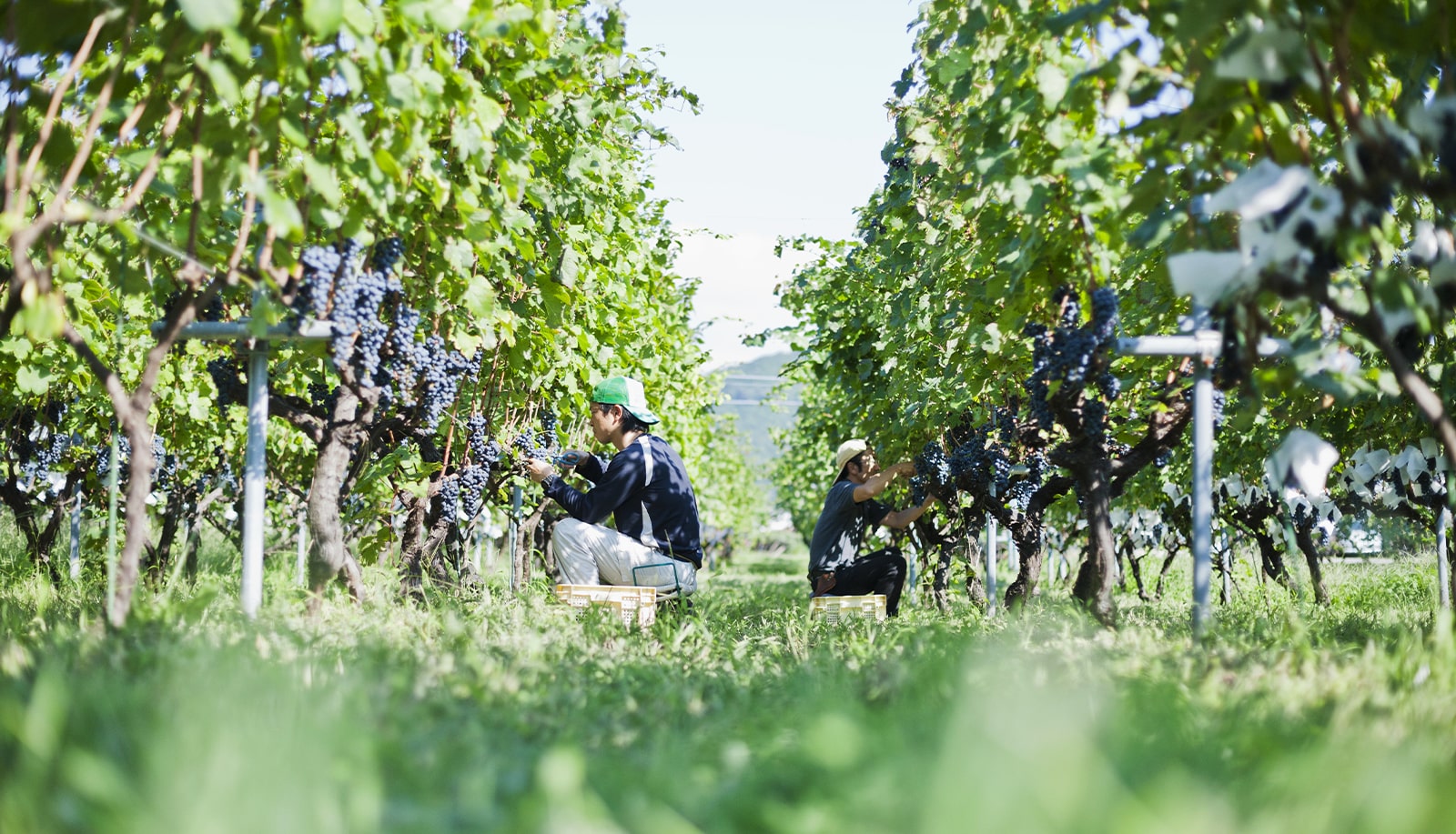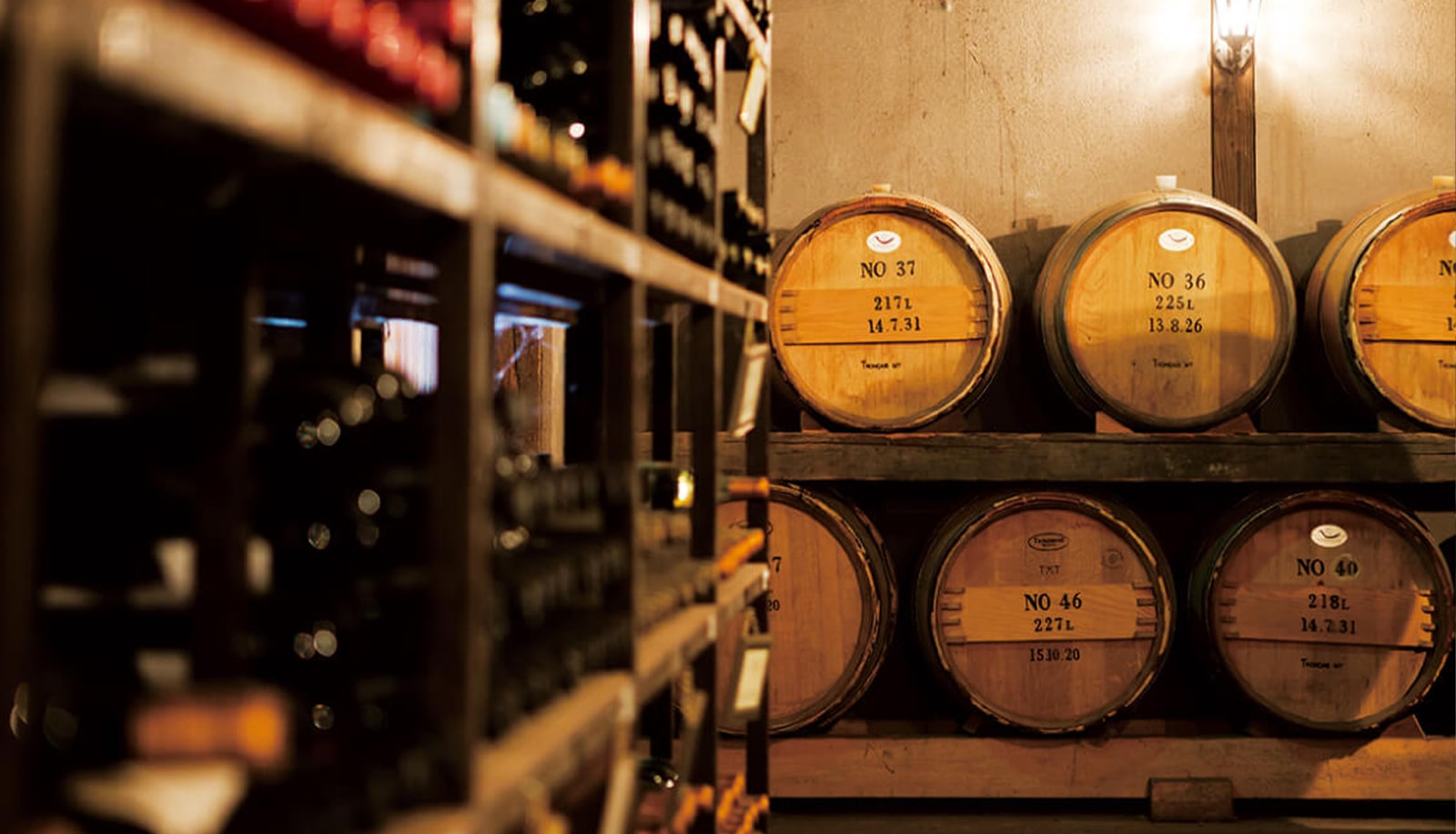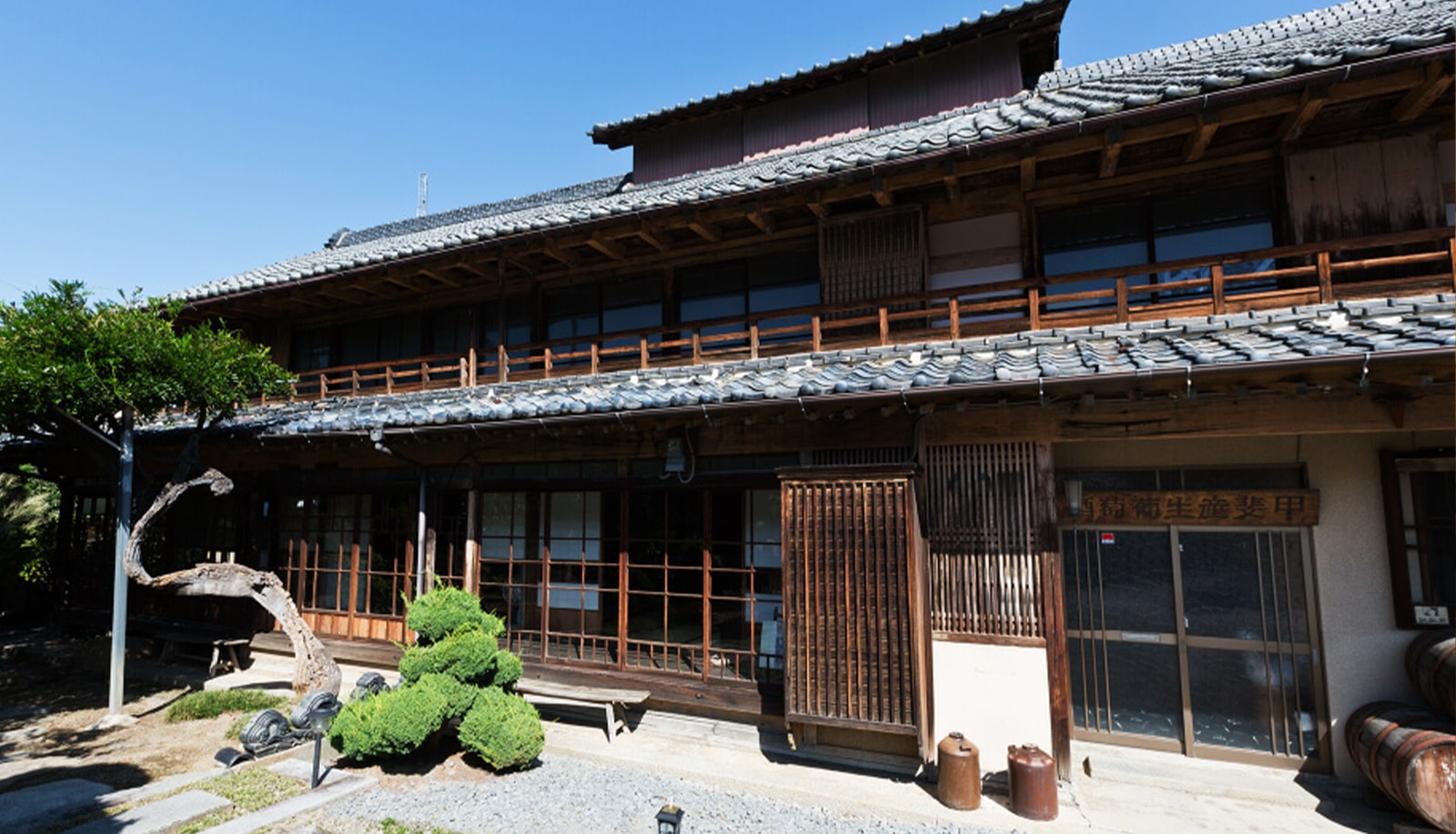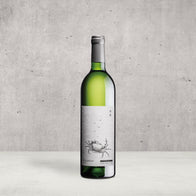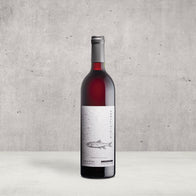
くらむぼんワイン
Kurambon Winery
Winery | ワイナリー
Kurambon Winery

The name Kurambon is taken from a short children's story by Kenji Miyazawa, a much-loved and revered Japanese writer from the early 1900's, titled "Yamanashi (Wild Pear)." In the story, Kurambon is a name repeatedly mentioned by the protagonists, two children crab siblings, but it is a character who never appears in the story and whose identity nor what it symbolizes are ever explained. Nozawa, the fourth-generation owner of Kurambon took the name, inspired by Miyazawa who often deals with themes of humans coexisting with nature. Kurambon was founded in 1913. It prides itself in their close relationships with local grape farms. They put emphasis on wines made with Koshu grapes, a grape varietal that goes back a 1000 years. Instead of wines mechanically made, their aim is to create more natural wines where the grapes' transformation to wine is gently aided by wine makers. The mainhouse of the winery is a 140-year old former silkworm farmhouse transported from Makioka, about 6 miles away from Katsunuma. The mainhouse is open to the public for wine tastings, purchasing wine, and is also a reference room. They have their own vineyard a minute-walk from the winery where they grow Chardonnay and Cabernet Sauvignon grapes. The vineyard became organic since 2007, with no chemical or insecticides. In the first two years they lost half the crop, but since then through trial and error, they are growing strong, healthy grapes. Most grapes in Japan use the pergola training method, but inspired by the owner's French education, Kurambon uses the Guyot approach (vertical trellis system, which reduces yield but increases quality).
Founded
1913
Employees
4
Flagship Product
N Series
Location
Yamanashi Prefecture
Yamanashi Prefecture is located in the middle of Japan's mainland. A short, 90-minute train ride from Tokyo, with famous lakes and surrounded by mountains, Yamanashi is a popular tourist destination. Mount Fuji's north side is also in Yamanashi, where hundreds and thousands visit to climb to the summit. Kurambon is located in Katsunuma, the biggest wine-producing region in Japan.

Chief Winemaker
Takahiko Nozawa

After dropping out of Keio University's engineering department, Nozawa went to France to study wine in the Beaune and Burgundy region. While growing up surrounded by wine, he had no interest in wine until he went to France. Inspired by the culture of sharing and enjoying wine with family and friends, he came back to Japan ready to take over his family's wine business. In 2007, he met Yvonne Hégoburu, a biodynamic winemaker who began wine making when she was 60 in tribute to her late husband. Nozawa decided to go biodynamic after tasting Hégoburu's Jurançon wine.
Recommendation
Favorite
Notable
Awards & Accolades
- N koshu 2018 in Silver medal in DWWA2020Kurambon Muscat Bailey
- 2018 Bronze medal in DWWA2020Sol Lucet Koshu for M&S
- 2017 Silver medal in DWWA2018
Shop
From this Winery
Our Mission
The most important thing for me in wine-making is to make the wine using the most natural method, using grapes grown in the most organic way. I want to grow robust grapes by bringing out their innate immunity and strength by adding as little human elements or chemical help as possible.
Takahiko Nozawa
Quality
Our Grapes
Katsunuma sits on the alluvial fan of Hikawa river. With its drastic difference in temperature between night and day, one of the longest daylight hours in Japan, and little rainfall, it is the ideal place to grow grapes. In hopes to bring out the natural characteristics of the land, Kurambon's own vineyard uses no chemicals or insecticides and is unplowed and unweeded since 2007. As a result, the vineyard must be looked after more meticulously and aired thoroughly to keep blight at bay. Insect-eaten leaves can be found, but it also invites lots of birds that feed on these insects, and the dead weeds create fertile soil. Kurambon focuses mainly on Koshu grapes, with Muscat Bailey A, Cabernet Sauvignon, and Chardonnay as well. Koshu grapes are said to have been discovered 1300 years ago when Gyoki the monk, led by a vision of the Medicine Buddha holding a bunch of grapes at the local Daizen-ji temple, discovered the grapevine; in reality, considering the DNA analysis by UC Davis, the grape seems to be a hybrid of mostly European and Asian grapes and it is most likely that they came to Japan from the Caucasus by way of the Silk Road. Koshu grapes have thick, pink skins and are hardy, with a great balance of fruitiness and acidity.


